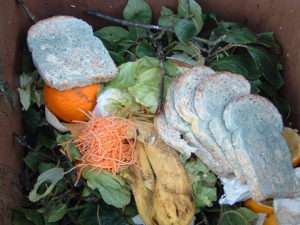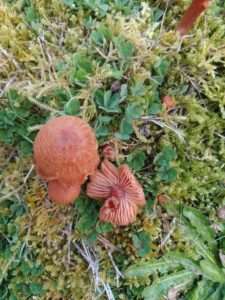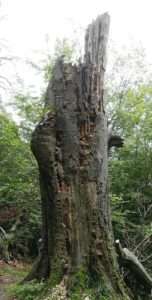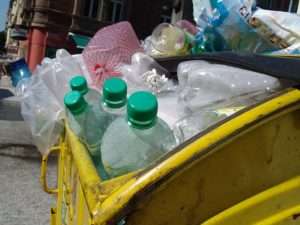 Last week I wrote about detritivores, those animals (and occasional plant) that ingest decaying matter and thereby help control diseases and general smelliness in nature. There is another group of living beings on nature’s cleaning crew: the decomposers. Also known as saprotrophs, these beings are not only crucial to helping clean up the waste of the world, but also keeping nutrients flowing into the food web. But what are decomposers, and what makes them different from detritivores?
Last week I wrote about detritivores, those animals (and occasional plant) that ingest decaying matter and thereby help control diseases and general smelliness in nature. There is another group of living beings on nature’s cleaning crew: the decomposers. Also known as saprotrophs, these beings are not only crucial to helping clean up the waste of the world, but also keeping nutrients flowing into the food web. But what are decomposers, and what makes them different from detritivores?
What Are Decomposers?
As I mentioned last week, detritivores are beings that ingest entire chunks of dead, decaying matter into their digestive systems. The vast majority of detritivores are animals, especially invertebrates like flies, slugs, and worms. At least one pitcher plant in the genus Nepenthes has also evolved to dissolve dead leaves and other detritus in their phytotelmata, the reservoir in which most Nepenthes capture live insects.
Unlike detritivores, decomposers absorb nutrients directly from decaying matter. Since they can’t ingest their food directly, they instead release enzymes that start the digestion process outside their own bodies. They can then absorb the resulting nutrients that are released as the enzymes break the dead matter down. They don’t manage to get every single nutrient, though, and many of these “leftovers” are then made available to plants and other living beings that wouldn’t otherwise be able to access them. In fact, without decomposers, the food web would quickly fall apart!
Most decomposers are too small for us to see without a microscope, such as bacteria and protozoa; billions of these tiny beings may be found in a decaying carcass or pile of compost. Fungi are another well-known group of decomposers; while some are similarly miniscule, others are easily large enough for us to see. The mushrooms that often pop up after a good rain are simply the reproductive organs of the fungus. Its main body, the mycelium, is made of little filaments called hyphae, and it is these that engage in the digestion process.
What Do Decomposers Eat?
 So what are decomposers chowing down on, anyway? For the most part, if it’s organic and dead, there’s a decomposer that can eat it. The stench of a rotting animal carcass or pungent wetland is the result of decomposer activity. Just like we and many other animals produce gas as we digest our food, so do many decomposers like bacteria have smelly byproducts of their feasting. While some of it may simply be due to circumstantial chemistry, there’s evidence that it may actually be due to “microbial warfare”, in which these chemicals may affect how various species of decomposer engage with or avoid each other.
So what are decomposers chowing down on, anyway? For the most part, if it’s organic and dead, there’s a decomposer that can eat it. The stench of a rotting animal carcass or pungent wetland is the result of decomposer activity. Just like we and many other animals produce gas as we digest our food, so do many decomposers like bacteria have smelly byproducts of their feasting. While some of it may simply be due to circumstantial chemistry, there’s evidence that it may actually be due to “microbial warfare”, in which these chemicals may affect how various species of decomposer engage with or avoid each other.
When something dies, it quickly becomes a banquet for decomposers (and detritivores, too.) Fecal matter and other body fluids also have their decomposers. But what happens if a new material evolves in nature, and there’s no one who can digest it?
 For example, wood first evolved in the Devonian Period, and woody plants became a dominant life form during the Carboniferous. It took 50 million years before certain fungi evolved to be able to break down wood, which meant that a lot of dead trees literally just sat there for very, very long periods of time. Today, of course, we have a plethora of fungi that can break down both lignin and cellulose, even in wood that is waterlogged or in otherwise extreme conditions.
For example, wood first evolved in the Devonian Period, and woody plants became a dominant life form during the Carboniferous. It took 50 million years before certain fungi evolved to be able to break down wood, which meant that a lot of dead trees literally just sat there for very, very long periods of time. Today, of course, we have a plethora of fungi that can break down both lignin and cellulose, even in wood that is waterlogged or in otherwise extreme conditions.
But it demonstrates just how important decomposers are to the food web, and life in general. Without these crucial beings, many nutrients would be locked away indefinitely in dead matter that never rotted.
Decomposers in the Anthropocene
There’s no denying that humans have changed the planet and its systems in massive, destructive, and occasionally literally earth-shaking ways. Through increasingly complex chemistry, we’ve even been able to create new molecules not found in nature.
 Plastics are possibly the most signature creation of humanity. Created from natural materials like cellulose and petroleum, plastics are so incredibly durable that it can take them several hundred years to biodegrade. And while some plant-based plastics biodegrade much more quickly under ideal circumstances, most of them that end up in the landfill–or the ocean–will persist as long as other plastics.
Plastics are possibly the most signature creation of humanity. Created from natural materials like cellulose and petroleum, plastics are so incredibly durable that it can take them several hundred years to biodegrade. And while some plant-based plastics biodegrade much more quickly under ideal circumstances, most of them that end up in the landfill–or the ocean–will persist as long as other plastics.
A few years ago, scientists in Japan discovered a species of bacteria that was able to decompose PET, the plastic used in water bottles and a lot of other disposable packaging. The bacteria apparently evolved the ability to do so simply because there were so many plastic bottles lying around that it represented a resource to be exploited. They work too slowly to be helpful in dealing with the absolutely mind-boggling amount of plastic we produce every year, but the enzymes they developed may be a key in helping find quicker ways to break the material down safely. In short–their adaptations may hold the key to fixing one of our biggest mistakes.
This isn’t a replacement for stopping plastic pollution at the source, of course, but it is an incredible example of just how amazing decomposers really are. They’ve been with us pretty much since the start of life itself, and they will almost certainly be the last ones here, cleaning up the last remnants after every other living being has gone extinct.
